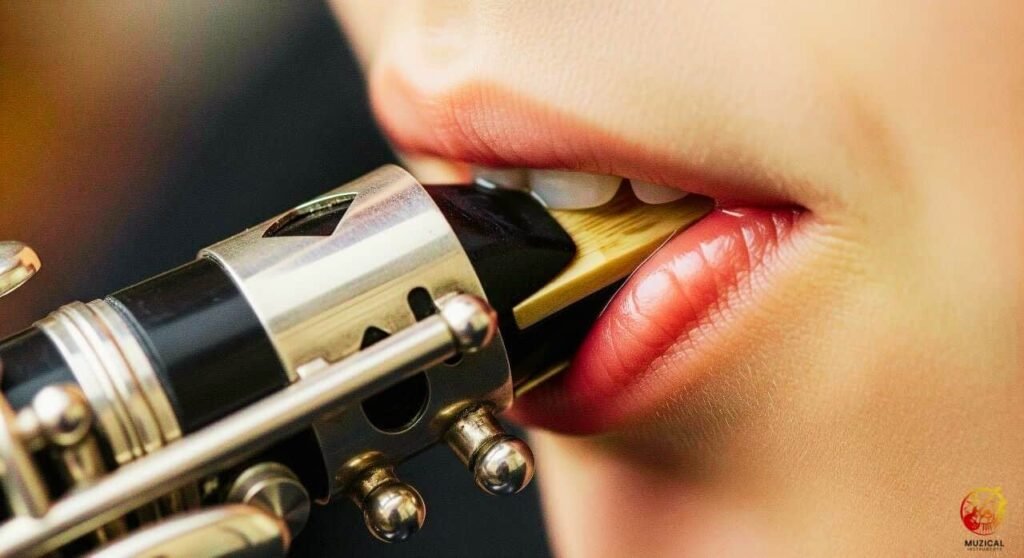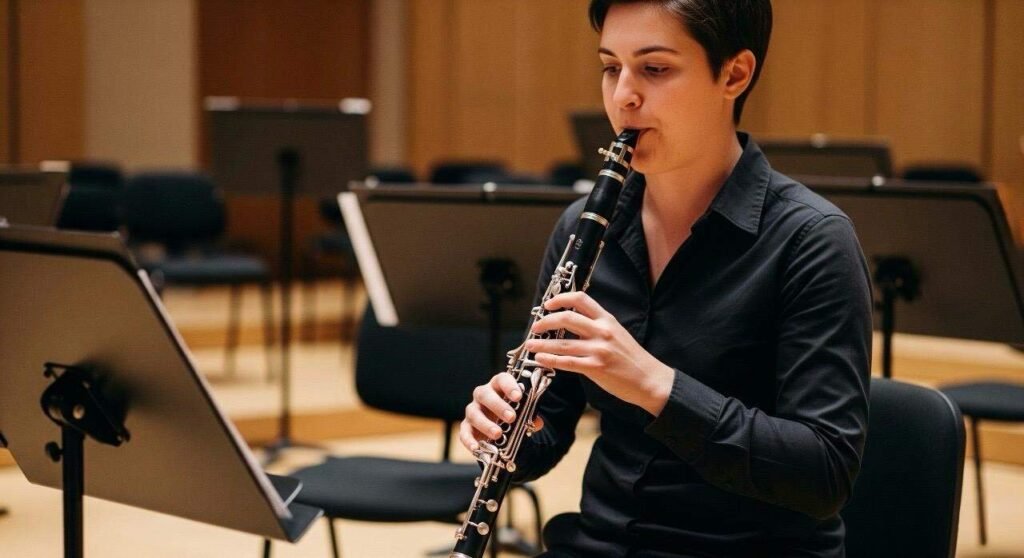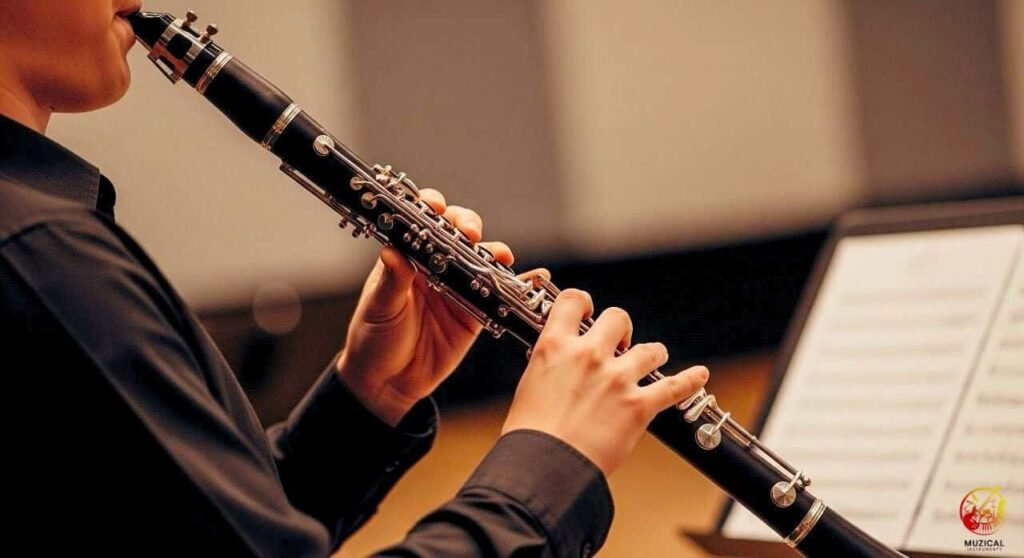Is Clarinet Hard on Your Teeth? What Every Player Should Know
Many new clarinet players have this query, is clarinet hard on your teeth? After noticing marks on their mouthpiece or feeling jaw pain. The answer is yes, clarinet playing can affect your teeth and jaw, but it doesn’t have to damage them permanently.
Playing clarinet puts pressure on your lower front teeth through the mouthpiece. This pressure can cause tooth wear, small chips, or even slight tooth movement over time. However, with the right technique and protective gear, you can enjoy playing clarinet without harming your dental health.
You’ll learn about the real effects clarinet has on teeth, which warning signs to watch for, and how to protect yourself. We’ll cover practical tips for proper playing technique, the best protective equipment, and when to get professional help.
By the end, you’ll know exactly how to keep your teeth safe while pursuing your musical goals.
Does Clarinet Playing Really Damage Your Bottom Teeth?

Yes, clarinet playing can damage your bottom teeth if you use poor technique or play without protection. Research shows that woodwind instruments like clarinet put pressure on teeth and can cause dental problems, especially in the lower front teeth that contact the mouthpiece.
The damage happens slowly over months and years. Your bottom teeth might develop small grooves where they touch the mouthpiece. Some players notice their teeth getting flatter or developing tiny chips. The tooth enamel, the hard outer layer, can wear down from constant pressure.
How much damage occurs depends on several factors.
- Players who bite too hard on the mouthpiece face higher risks.
- Those who practice many hours daily without breaks also see more tooth problems.
- Young players whose teeth are still growing may experience more changes than adults.
The type of mouthpiece you use matters too. Hard rubber mouthpieces can be tougher on teeth than softer materials. However, most dental issues come from technique problems, not the instrument itself.
Good news: proper clarinet technique protects your teeth. Professional players rarely have serious tooth damage because they’ve learned to play with minimal bite pressure. They use their lip muscles and air support instead of jaw force to control the sound.
Can Playing Clarinet Move Your Teeth or Change Your Bite?
Yes, playing clarinet can move your teeth, especially in younger players whose teeth are still developing. The constant pressure on lower teeth can cause them to tip inward slightly or create small gaps between teeth over time.
This tooth movement happens because teeth respond to steady pressure. Even light force applied regularly can shift teeth gradually. When you play clarinet, you’re putting this type of consistent pressure on specific teeth for hours each week.
Children and teenagers face the biggest risk for tooth movement. Their jaw bones are still soft and teeth move more easily. Adult players can still experience some changes, but it takes longer and requires more extreme playing habits.
The most common changes include:
- Lower front teeth tipping slightly inward
- Small gaps developing between front teeth
- Changes in how upper and lower teeth fit together
- Slight shifts in jaw alignment (rare cases)
Most tooth movement from clarinet playing is minor and develops slowly over years. Many players never notice significant changes. However, if you’re concerned about your bite or see obvious tooth movement, talk to your dentist and clarinet teacher about adjustments.
What Are the Best Mouthpiece Patches to Protect Your Teeth?
Mouthpiece patches protect your teeth and lips while playing clarinet. These thin adhesive strips stick to the bottom of your mouthpiece where your teeth make contact. They spread out the pressure and create a softer surface.
The main types of patches work differently:
Rubber Patches
These are the most popular choices. They last 6-12 months with regular playing and provide good grip and cushioning. Most music stores carry them, and they work well for both students and professionals.
Fabric Patches
Softer than rubber but wear out faster (2-4 months). Great for players with sensitive teeth or those just starting out. They feel more comfortable but may slip during intense playing.
Silicone Patches
Newer option that combines comfort with durability. They last 8-15 months and work especially well for players who practice long hours or have jaw problems.
| Patch Type | How Long They Last | Comfort Level | Best For |
|---|---|---|---|
| Rubber | 6-12 months | Good | Regular practice |
| Fabric | 2-4 months | Very good | Sensitive teeth |
| Silicone | 8-15 months | Excellent | Heavy practice |
Put the patch exactly where your teeth touch the mouthpiece. A properly placed patch can eliminate tooth sensitivity and vibration problems. Replace patches when they get thin, lose their stickiness, or develop holes.
Some players prefer custom dental guards made by their dentist. These cost more but offer better protection for players with existing dental problems or those who play professionally.
How Do You Develop Proper Clarinet Technique to Save Your Teeth?

Learning correct clarinet embouchure protects your teeth while improving your sound quality. The key is using your bottom lip as a cushion between your teeth and the mouthpiece, not biting down hard with your jaw.
Bottom Lip Position
Roll your bottom lip slightly over your bottom teeth. This lip cushion should protect your teeth from direct mouthpiece contact. Many students resist this at first because it feels less secure, but it’s essential for dental health.
Mouthpiece Depth
Take about one third of the mouthpiece into your mouth. Too little mouthpiece makes you bite harder for control. Too much mouthpiece causes pitch and tone problems.
Jaw Relaxation
Keep your jaw muscles relaxed. Your bottom teeth should lightly touch the patch without heavy pressure. Think of your teeth as guides, not clamps.
Air Support
Use strong air flow from your diaphragm to control dynamics and tone. This reduces the need for jaw pressure. Practice long tones focusing on air support rather than bite force.
Common technique mistakes that hurt teeth:
- Biting too hard on the mouthpiece
- Not using enough bottom lip cushion
- Taking too little mouthpiece in the mouth
- Clenching jaw muscles during difficult passages
- Relying on bite pressure instead of air support
Work with a qualified clarinet teacher to develop proper technique from the start. Many dental problems come from poor initial instruction that creates bad habits.
What Warning Signs Show Clarinet Is Hurting Your Teeth?

Watch for these early warning signs that your clarinet playing might be damaging your teeth:
Tooth Sensitivity
If your bottom front teeth hurt when drinking hot or cold liquids, this could signal enamel wear from playing. Healthy teeth shouldn’t become sensitive from proper clarinet technique.
Visible Changes
Look for small chips, cracks, or flat spots on your bottom front teeth. Use good lighting and check regularly for any changes in tooth shape or surface.
Playing Pain
Your teeth shouldn’t hurt while playing clarinet. Jaw pain, tooth aching, or pressure discomfort means you’re using too much bite force or have technique problems.
Bite Changes
If your teeth feel different when you bite down or if gaps appear between previously tight teeth, you might be experiencing tooth movement.
Mouthpiece Damage
Breaking mouthpiece patches frequently or creating deep grooves in patches indicates excessive bite pressure.
Immediate warning signs requiring professional help:
- Sharp tooth pain during playing
- Visible chips or cracks in teeth
- Swelling or signs of infection
- Sudden increase in tooth sensitivity
- Difficulty maintaining proper embouchure due to dental pain
Don’t ignore subtle changes hoping they’ll get better on their own. Dental damage from wind instruments usually gets worse without treatment. Early action saves your teeth and prevents expensive dental work later.
Should You See a Dentist About Clarinet-Related Dental Problems?
Yes, see a dentist if you notice any signs of tooth damage or experience dental discomfort while playing. According to the Journal of the American Dental Association, children’s musical instruments can affect tooth position, making professional monitoring important.
Dentists who work with musicians understand the unique challenges wind instrument players face. They can spot problems early and suggest protective measures before serious damage occurs. Regular check-ups become especially important for active clarinet players.
When to Schedule a Dental Visit:
- Persistent tooth sensitivity while playing
- Visible tooth damage or changes
- Pain during or after practice sessions
- Questions about protective equipment
- Regular preventive care (every 6 months for young players)
Your dentist might recommend different treatments depending on your situation. Minor enamel wear can often be treated with fluoride applications. More serious damage might need dental bonding or crowns. For players with braces, orthodontic wax can protect lips from metal brackets.
Communication between your dentist and clarinet teacher helps create the best protection plan. Share any dental concerns with your music instructor so they can help adjust your technique if needed.
Consider preventive dental care an investment in your musical future. Regular cleanings, fluoride treatments, and professional monitoring cost much less than treating advanced dental damage. Most clarinet-related tooth problems can be prevented with proper technique and regular dental care.
Final Thoughts
Is clarinet hard on your teeth? The answer depends on how you play and what steps you take to protect yourself. While clarinet playing does put pressure on your teeth, proper technique and protective equipment can prevent serious damage.
The most important things to remember are: use the correct embouchure with your bottom lip cushioning your teeth, invest in quality mouthpiece patches, and watch for early warning signs of dental stress. Regular dental check ups help catch problems before they become serious.
Your teeth and your music both deserve care and attention. With the right approach, you can enjoy playing clarinet for years without compromising your dental health.
Ready to protect your teeth while improving your clarinet playing? Start by checking your current technique and getting a good mouthpiece patch, your smile will thank you later.
FAQ: Is Clarinet Hard on Your Teeth?
1. Can you play clarinet with braces?
Yes, you can play clarinet with braces, though it may take 2-4 weeks to adjust. Use orthodontic wax on brackets to protect your lips, practice shorter sessions initially, and consider softer mouthpiece patches. Many professional musicians have played successfully with braces.
2. What are mouthpiece patches and do I need them?
Mouthpiece patches are thin adhesive strips that stick to your clarinet mouthpiece where your teeth contact it. They protect your teeth from pressure and prevent wear. All clarinet players should use patches, they’re inexpensive protection that prevents expensive dental problems.
3. Can playing clarinet move your teeth or change your bite?
Yes, especially in young players whose teeth are still developing. The constant pressure can cause bottom front teeth to tip slightly inward or create small gaps. Adults face lower risk, but anyone concerned about tooth movement should consult their dentist and clarinet teacher.
4. How do you know if clarinet is hurting your teeth?
Warning signs include tooth sensitivity to hot/cold drinks, visible chips or wear spots on bottom front teeth, pain while playing, jaw discomfort after practice, and frequently breaking mouthpiece patches. Any of these symptoms mean you should adjust your technique and see a dentist.
5. Can you play clarinet with false teeth or dentures?
Playing clarinet with dentures is possible but challenging. Success depends on how well the dentures fit. Use a soft mouthpiece patch and expect an adjustment period. Some players find partial dentures easier to work with than full dentures. Consult your dentist for personalized advice.
6. What’s the proper clarinet embouchure to protect teeth?
Roll your bottom lip slightly over your bottom teeth to create a cushion. Take about one-third of the mouthpiece in your mouth, keep your jaw relaxed, and use light tooth contact with the patch. Focus on air support rather than bite pressure for sound control.
7. Should young clarinet players see a dentist regularly?
Yes, young clarinet players should have dental check-ups every 6 months instead of yearly. Growing teeth are more susceptible to movement from instrument pressure. Early monitoring helps catch problems before they become serious and expensive to treat.
